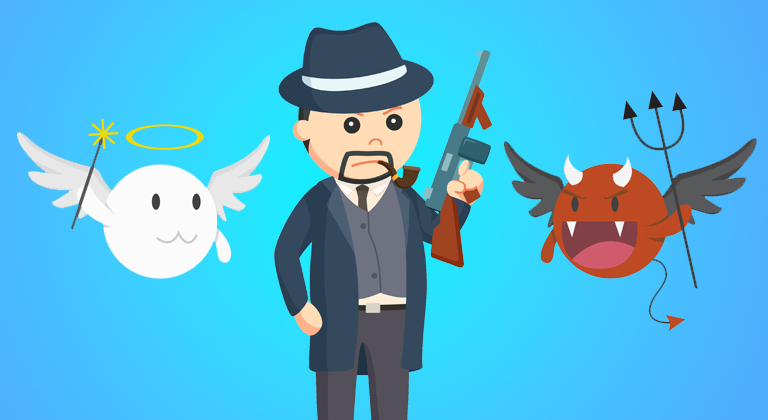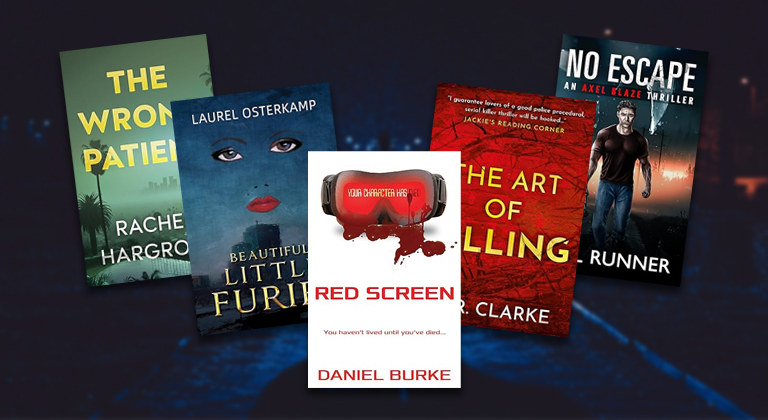Crafting Relatability through Imperfect Heroes
The heart of any memorable story lies not in perfection, but in the imperfect layers of its flawed heroes and heroines. Imperfections and vulnerabilities in our heroes can transform them from mere characters on a page to living, breathing entities that resonate deeply with readers. The flaws of a protagonists help connect us, making their triumphs and struggles our triumphs and struggles.
Today, Ginger explores a variety of ways that we can bring complexity and imperfection to our main characters, while still allowing readers to root for them. Whether it’s the moral ambiguity of Hamlet or the enduring resilience of Jane Eyre, Ginger takes us through examples that demonstrate how a flawed character can captivate readers, allowing our imperfect heroes to not only leap off the page, but leave a lasting impression long after the story is done.
Superman may be the most powerful member of the Justice League, but Batman consistently tops the polls as the most popular superhero of all time – largely because that character of Bruce Wayne is so much darker, more wounded, and relatable than the God-like Kal El, who is derided by both heroes and villains as a moralistic “boy-scout” who always does the right thing.
Not that there’s anything wrong with doing the right thing! But heroes who never make mistakes don’t make for very excited main characters – and in the vast landscape of literature, readers have always been drawn more often to protagonists who aren’t flawless “boy-scouts” like Superman, but instead harbor relatable imperfections and defects like the tortured Dark Knight.
As an author, crafting a compelling, flawed protagonist is a skill that can really elevate your work and help it resonate with readers on a much deeper level. With that in mind, I’ve been researching the attributes that make a flawed protagonist so compelling; and I’ll share what I’ve found with you, and provide examples from classic literature to help illustrate these principles.
Imperfections Add Complexity
As I said above, Superman is often considered a “boring” hero because he’s always so perfect. The most memorable protagonists of fiction and literature are very far from perfect. Just look at the alcoholic, womanizing James Bond – or the acerbic, Vicodin-addicted Dr. Gregory House. These characters possess deep flaws that serve to humanize them – making them relatable despite the less relatable, larger-than-life things about them that make their stories so much fun.
But flaws like those often tell a deeper story – hinting at why the character is the way they are. A great example of that is the classic character of Jay Gatsby from F. Scott Fitzgerald’s The Great Gatsby. Gatsby initially seems larger than life – incredibly wealthy, throwing lavish parties every weekend. Later, however, we discover his fatal flaw; his relentless obsession with his first love, which has led him to create an entire personality and build an empire just to lure her back to him. Gatsby’s pursuit of an unattainable dream showcases the complexity of his character and makes him achingly relatable to those of us who still pine for “the one that got away.”
Internal Conflicts
The cornerstone of any compelling story is conflict, and a flawed protagonist is often more compelling because they’re grappling with an internal conflict that drives their motivations and behaviors. Take the titular Hamlet from William Shakespeare’s iconic play as an example.
Hamlet is torn between his desire for revenge for his father’s murder and the moral and ethical considerations that hold him back from seeking that revenge. Throughout the play he is hesitant and contemplative, often questioning the consequences of revenge, yet driven to pursue it nevertheless. Making his conflict worse, Hamlet feels betrayed by those who were once closest to him, most notably his mother, but also his friends. As a result, he struggles to trust the very people who could help him most. Deception and betrayal contribute to the complexity of his internal conflict – and together, they combine to make him one of the most fascinating characters in all of western literature.
Evolution Over Time
A story is a journey, and the most satisfying stories see the protagonist change and evolve along the way. If you’re familiar with the structure of a good story, you can see that it’s circular – with the difference being that when our hero or heroine returns to the same place they started, they’re a totally different person.
Therefore, a truly compelling protagonist must undergo transformation and growth throughout the story, and highlighting their flaws is the perfect starting off point. A great example is Jane Eyre, from Charlotte Brontë’s novel Jane Eyre. Jane is a very relatable character, flawed by the meekness she developed as an oppressed orphan. That resonates with any of us who’ve struggled to stand up for ourselves; making us root for her despite Jane being “weak.”
However, as the story progresses, Jane evolves into a strong, independent woman; and as the story ends, she’s able to provide the love and nurturing that she was denied growing up. Tracking this evolution has captivated generations of readers, and makes the story especially compelling.
Vulnerability and Relatability
One of the other reasons Superman is so boring is the fact that he’s practically indestructible. Born on the planet Krypton, Superman can survive anything up to and including the blast of a nuclear bomb – meaning there’s no real power on Earth that can threaten him.
Batman, on the other hand, is just a mentally traumatized guy in a suit – and generations of young men have read his adventures, thinking: “Maybe, just maybe, I could be Batman.”
The fact is, readers connect much more readily with protagonists who exhibit vulnerability; because vulnerability is what defines the human experience.
Take Atticus Finch, from Harper Lee’s To Kill a Mockingbird. He’s a principled lawyer in the Depression-era south, who agrees to defend a Black man accused of raping a white woman. Due to the alleged victim’s status in the community, much of the town turns against Atticus despite him simply trying to do the right thing and offer Tom his basic legal rights as an American. This makes he and his family vulnerable – to the scorn of their neighbors, and eventually to physical assault. The fact that Atticus was willing to put himself and his family at risk in order to do the right thing is meaningful because of that vulnerability. There’s no heroism in doing the right thing if (like Superman) you do so with no risk to yourself.
Contradictions and Ambiguities
Forget Superman and Batman – one of the original superheroes was Sherlock Holmes, created by Sir Arthur Conan Doyle in Victorian England, and now the most-portrayed fictional character in film and television.
What’s compelling about Sherlock Holmes is that his superhuman skills are balanced by some extremely human (and therefore relatable) flaws. Holmes is a brilliant detective with exceptional deductive skills, but he struggles with social interactions, displays a slough of eccentricities, and dabbles with narcotics to compensate. Today, many people on the Autism Spectrum say that Sherlock Holmes was one of the first characters they truly related to; and the idea of Holmes being neurodivergent has practically become a trope of modern adaptations.
What’s especially apparent is how many ASM people relate to the contradiction between Holmes’ awkwardness and his genius as a detective. Many on the Autism Spectrum have an extraordinary talent for mathematics, science, and engineering; and characters like Holmes give them a role model that suggests that maybe, in their own unique way, they’re superheroes too.
Moral Ambiguity
Returning to more traditional superheroes, the recent DC movie Black Adam was a critical and commercial failure, and one possible reason for that was how the classic anti-hero Black Adam never actually did anything anti-heroish throughout his adventure. Despite claiming “I’m no hero” on multiple occasions, he never once hurts anybody except the bad guys, and ultimately offers the ultimate sacrifice to protect those in need.
To pull off a true anti-hero, you have to have them do unheroic things. Challenging the morality of your protagonist requires a careful balancing act, but those who have got it right have created some of the most memorable protagonists in literature.
A great example is Raskolnikov, from Fyodor Dostoevsky’s classic Crime and Punishment. A brilliant, moralistic law student, he becomes bitter and twisted as he’s forced to endure poverty and humiliation. Ultimately, this leads to him committing a seemingly unforgivable crime – murdering and robbing the corrupt pawnbroker, Ivanovna. However, Ivanovna was a despicable character, and Raskolnikov’s situation truly was unjust, blurring the lines between whether the murder was truly right or wrong.
Of course, Raskolnikov eventually faces and accepts the consequences of his actions; but forces the reader to grapple with his moral ambiguity until he does.
External Challenges
Moral ambiguity returns us to Batman – a vigilante who’ll happily beat and hospitalize the criminal scum of Gotham City, but refuses to ever kill them. This personal rule sounds great, until an external force like The Joker arrives and sends Batman’s moral compass spinning.
Batman invariably captures The Joker and locks him in Arkham Asylum; but Joker continuously escapes and goes on to commit more heinous crimes. How many lives could Batman have saved if he’d killed The Joker instead of letting him escape again, and again, and again?
Having external forces test the flaws of our favorite characters is what makes them so compelling – and those forces don’t have to be as murderous as The Joker. Take Elizabeth Bennet from Jane Austen’s Pride and Prejudice. The arrival of Mr. Darcy forces her to confront her own prejudices and misconceptions in the face of societal expectations and romantic entanglements, which in turn makes the reader question many of the expectations of prejudices they might harbor themselves.
Conclusion
Batman’s darkness is why polls have consistently rated him as a more popular superhero than Superman, and I’d argue that most of the memorable protagonists in literature became that way because of their own flaws and internal conflicts. These are the things that makes characters relatable, and drive readers to become invested in their journey.
But crafting a compelling, flawed protagonist requires a delicate balance. Flaws can make characters relatable, but only to a point. Tip the balance too heavily, and your hero becomes a villain.
But that line is easy to define – as I’ve demonstrated in the characters I pulled from classic literature in the examples above. They’ve lasted the test of time because of their flaws, not in spite of them. Embracing the similar complexity of your own protagonists is the best way to leave a lasting impact on your readers – who’ll always crave more than just perfect heroes.











